Soundbars, as their name suggests, are speakers shaped like a bar. They are a compact version of the speakers that need less space. They do produce better sound quality and can be mounted as per the user’s needs. The selection process of such soundbars is dependent on certain factors discussed below.
Frequency Response: The most sought-after factor is the frequency response of a speaker/soundbar. It determines the accuracy of the speaker’s sound reproduction. The soundbars are known for producing crisp clear notes of the music it plays. The frequency response also plays an important role in the volume of the speaker. Type of Soundbars: Soundbars are commonly divided into two types. The passive soundbars and the active soundbars. Passive soundbars do not have any inbuilt amplifier. On the other hand, the active soundbars come with an inbuilt amplifier. The amplifiers assist in boosting the audio signals. Surround Sound Capability: The soundbars have different numbers of channel configurations. For a good surround sound reproduction, the number of speakers matters. Combined with technologies like Dolby Atmos, the speakers collectively produce an immersive surround sound.
Best Soundbars Without Subwoofer 2023
Best Soundbars Without Subwoofer Reviews
1. Bose TV Speaker – Soundbar
Best Soundbars Best Mini Amplifiers Is Dolby Atmos Worth It
Bose is one of the well-known names in the audio system market. Pairing innovation and 60+ years of experience, it develops class-leading audio solutions. It has therefore become a favorite brand for music industry professionals as well as regular consumers. The Bose TV Speaker is a wireless soundbar that uses Bluetooth technology. The sound bar consists of two speakers that are placed at an angle. This creates a surround sound signature of the played music. It can be controlled via a remote controller. The remote controller has a dialogue mode which enhances the speech sections making them more audible. A special bass button is also given on the controller that boosts the depth of the sound and produces that thumping bass signature. Dimension-wise, it is over 4-inches wide and 23-inches long. With a height of 2.2-inches, they can be kept below the television or near other devices. It blends with the devices as if it doesn’t exist. The soundbar comes with an optical audio cable to connect it to the television. Being a Bose product, it can be connected with other Bose sound bars using standard 3.5mm cables. The sound bar also has a notification LED that provides different information related to Bluetooth connection. Best Features:
2 speakers in an angled setup with a center tweeter for perfect surround sound The dimension of the sound bar is 4-inch wide and 23-inch long with a height of 2.2-inch Optical audio cable to instantly connect the television Remote controller Supports Bluetooth wireless connectivity Multicolor LED for notifications
Pros:
Enhance dialogue mode to make speech sections more audible Bass boost buttons create the deep bass signature without needing any external subwoofer The soundbar can be plugged with a 3.5mm cable to make it compatible with other Bose soundbars
Cons:
HDMI audio cable needs to be bought separately
2. JBL Multibeam Soundbar
JBL is a synonymous name with audio systems. Being a sub-brand of another well-known audio system company, Harman, it has a product range focused on high quality. Therefore, it is loved by every audiophile consumer. The JBL 5.0 Soundbar is a 5-channel soundbar. It has a total of 5 main speakers placed over the body length. This soundbar works with the Virtual Dolby Atmos to produce the perfect 3-D surround sound. With the help of the 4 passive radiators, it creates a deeper sound note. With the help of JBL’s multibeam technology, these radiators produce a punchier bass signature from the soundbar without any external subwoofer. It comes with 4K pass-through support that enables a lossless passing of the sound data. For connectivity, it is Bluetooth enabled to wirelessly stream music via tablet or smartphone. It also supports streaming of video remotely thanks to the inbuilt Chromecast feature. With voice commands from Alexa or similar services, the soundbar can be controlled remotely. It can also be controlled via a normal television remote. Best Features:
5-channel speaker configuration 4 dedicated passive radiators for deep notes Bluetooth and Chromecast connectivity enabled Voice command support for Alexa Multibeam technology for customized surround output
Pros:
Even in the absence of a subwoofer, the soundbar can produce punchy bass notes The in-built Virtual Dolby Atmos features enable 3-D surround sound without needing extra speakers The 4K pass-through feature process sound data and keeps the overall quality constant
Cons:
Special features like speech enhancement are not available
3. SENNHEISER AMBEO Soundbar
Sennheiser is one of the pioneer brands that shaped the audio technology market. Using its experience of 75+ years, the brand has developed many innovative products. It can deliver an unmatched audio experience to the consumer by involving audio professionals in the manufacturing process. The Sennheiser Ambeo Soundbar is a 5.1.4 channel soundbar. It has 13 different speakers placed all over the body length. There are 6 long throw woofers of a 4-inch size that take care of the bass signature. The 5 tweeters of 1-inch size handle the higher frequency notes. The 2 top firing speakers create sound notes similar to the top and bottom-placed speakers. The cone speaker and the aluminum dome tweeter enhance the overall experience. All these speakers work in sync to create the perfect 3-D surround sound experience. The soundbar can deliver a frequency response of 30Hz to 20kHz creating a wider range of notes. It comes with a calibration microphone to configure the output as per the user’s requirement. Various default presets are also provided to choose from. With 4K passthrough compatibility, the soundbar processes data without any loss. It supports streaming via Bluetooth and Chromecast. A dedicated app provides control over the soundbar at the tip of your fingers. Best Features:
Brushed aluminum casing 1.4-channel soundbar with 13 different types of main speakers Frequency response of 30 Hz to 20kHz Default presets for customized sound signature Bluetooth and Chromecast streaming support App connectivity for remote control of the soundbar
Pros:
The soundbar can produce deep and punchy bass notes without needing an external subwoofer No external speakers are needed to create 3-D surround sound Calibration microphones help in adjusting the sound output to a studio-grade level
Cons:
This soundbar is priced higher than other options
4. Bose Smart Soundbar
Another product from its wider portfolio of Bose made it to the list. The product mentioned below is one of the latest generation soundbars from Bose. The Bose Smart Soundbar 900 is one of the most powerful options on the list. It has two up-firing dipole speakers fitted on each end of the body. These speakers are customized for creating sound waves that travel to each corner of the room. The speaker setup automatically offers active amplification of sound waves. The soundbar has a sleek design that blends in with the smart home setup. It offers connectivity with Bluetooth and Wi-Fi and can stream music via apps like Spotify. The soundbar has a single connection option and uses either an HDMI eARC cable or an optical audio cable to connect with devices. To control the soundbar, support for the Bose music app is enabled. It has in-built Alexa and Google Assistant that accepts commands from the user. The soundbar has a built-in noise-canceling microphone that assists in accepting commands from every angle. Best Features:
Two dipole speakers configured as upward-firing speakers Bluetooth and Wi-Fi connectivity for wireless music streaming Single connection port for HDMI eARC and optical audio cables Built-in noise cancellation microphone to filter voice commands Inbuilt voice assistants like Alexa and Google Assistant for voice commands Dedicated Bose music app
Pros:
It has a dedicated app that allows remote controlling of the soundbar The speakers work in pair with the Dolby Atmos technology to create perfect sound notes It also has privacy options that disable the microphones when needed
Cons:
The absence of a display screen hinders getting the soundbar’s running status
5. Sonos Arc – Smart Soundbar
Sonos is one of the new brands that has already proved its mettle in the audio system market. It has a range of smart audio solutions that works side by side with the new technologies. The brand is one of the pioneers of wireless audio devices. The Sonos Arc Soundbar is the premium offering of the brand. It is named “Arc” due to the broad mesh over the speakers that makes way for wider sound waves. It has a total of 11 main speakers that are tuned for high performance. They create a deep bass signature without needing a subwoofer. Working with the Dolby Atmos technology, the soundbar can create a perfect 3-D surround sound experience. The soundbar comes with wifi support to stream music and eliminates the need for wires. The soundbar can be connected to devices via the HDMI interface. This soundbar can also be wirelessly connected with external speakers of the same brand when an extra sound boost is needed. To control the soundbar volume and other settings, a dedicated remote controller is provided. In absence of the remote controller, the dedicated app can be used to control the soundbar remotely. Best Features:
Board speaker grill design 11 main speakers with different configurations Dolby Atmos technology is enabled Supports wifi streaming and AirPlay Wireless connectivity option for external speakers HDMI port to connect with devices
Pros:
It produces an accurate bass signature without needing an external subwoofer The remote controller and the dedicated app offer multiple controlling options for the soundbar A wider grille design helps in creating wider sound waves and creates enhanced surround sound
Cons:
The soundbar doesn’t have a 4K passthrough feature
6. Denon Home Theater Soundbar
Denon is a manufacturer of audio systems developed especially for the entertainment industry. It has been a pioneer for innovations and technologies in the audio peripheral industry. Its product range carries the craftsmanship and essence of the brand’s 110+ years of experience. The Denon DHT-S126 Soundbar is tuned for high performance. It has 2 down-firing subwoofers of size 3-inches, that create a punchy bass signature. For midrange, 2 speakers of 1.75×3.5-inch size are available. The upper range of frequencies is taken care of by the dual 1-inch tweeters that recreate a theater-type quality audio experience. All these speakers work in sync with Dolby technology to create a perfect surround sound. The body is 2-inch tall and blends well with the mounting surface. It supports heavy gaming and Blu-ray movie streaming without any loss of signal. With 3 different presets, the soundbar adjusts output as per the user’s choice. To connect the soundbar with other devices, a standard HDMI port is also available. The soundbar does not need any external remote controller as it can be controlled by any standard remote controller. Best Features:
2-inch tall profile and compact design Combination of down-firing subwoofers, mid-range, upper range, and tweeter speakers Port for HDMI cable or optical cable Standard remote controller support Supports wireless streaming via Bluetooth
Pros:
Customizable presets help in adjusting sound output as per the user’s need In-built subwoofers enhance the bass notes and eliminate the need for external subwoofers Good surround sound quality at a lower price tag
Cons:
Does not have wifi or Chromecast support
7. Yamaha MusicCast Sound Bar
Yamaha is one of the most preferred brands among music instrument manufacturers. It has a good understanding of audio reproduction that helped create top-notch audio peripherals for the market. This helped Yamaha in catering to a diversified consumer range. The Yamaha YSP-5600 Soundbar has a 7.1.2 channel configuration. It has a total of 44 beam drivers that are placed all over the body length. Adding to this, two woofers are placed precisely at both ends. 12 up-firing speakers are placed at each end of the soundbar. They create the illusion of speakers minted on the ceiling. All these speakers work in sync with Dolby Atmos technology to deliver a high-clarity surround sound. The soundbar has Yamaha’s MusicCast technology enabled which makes it easier to connect with external speakers via an app. The app also has a streaming service to play music wirelessly. In absence of the app, the wifi and Bluetooth connectivity can also be used to stream music. To connect it with other devices, it has a dedicated port for HDMI or optical cables. The 4K passthrough technology helps in a lossless transmission of sound data. Best Features:
44 small speakers, 12 upward-firing speakers, and two woofers to create a 7-channel configuration with Dolby Atmos technology MusicCast app for wireless control of the soundbar Dedicated port for optical audio cable or HDMI cable Wifi and Bluetooth connectivity for wireless streaming
Pros:
The speakers create realistic surround sound 4K passthrough technology helps in streaming lossless quality music It has an upgradeable voice command feature for future applications
Cons:
It takes more mounting space as compared to the other options on the list
Buying Guide For The Best Soundbar Without Subwoofer
The soundbars have been getting popular recently due to their compact size. They blend with modern devices and yet deliver performance on par with those big speakers. A detailed list of such soundbars was discussed above along with their specifications. Some factors are important when choosing a soundbar without a subwoofer. Therefore, we have compiled this buying guide to help you understand the importance of those factors and ease your selection process.
1. Frequency Response
The accurate reproduction of the sound is important for any type of speaker. Frequency response takes care of this property. It matches the frequency range of human hearing to adjust the sound production. Hence the normal frequency response range of soundbars lies between 20Hz to 20Khz. When the soundbar eliminates a subwoofer, this frequency response range comes down to 20Hz to 40Hz. Above these values, the frequency starts affecting the decibel levels. This range is dominated by the sub-bass and upper-bass frequencies.
2. Type Of Soundbars
The different types of soundbars have different configurations of amplifiers. The passive soundbars do not have any amplifier inside. Active soundbars come with an in-built amplifier setup. Active soundbars are preferred over passive ones due to various advantages. They eliminate the need of setting up external amplifiers and do not need any tuning of inbuilt amplifiers. An active soundbar does not require any external power connection for the in-built amplifiers. Hence the overall installation cost of the active sound bars is lesser than the passive ones. Meanwhile, the passive soundbars have an upper hand in the customization of the sound system setup. This helps in the better tuning of the overall sound quality.
3. Surround Sound Capability
The surround sound of a soundbar depends on the total number of speakers it has. A single speaker does create surround sound. Two speakers have limited stereo sound. At Least 3 speakers are needed to create a surround sound effect. Various soundbars come with a numbering that defines their surround sound capability. A 2.0 system has 2 speakers and no subwoofer. A 3.1 sound system has 3 different speakers and 1 subwoofer arrangement. The 3 speakers act as the left, center, and right speakers. The most popular configuration starts from the 5-series sound system. A 5.1 sound system consists of 6 channels (5 speakers and 1 subwoofer). These speakers are placed in the front left, center, front right, rear left, and rear right positions. This setup syncs with each other to give a proper surround sound effect. The upgraded 7.1 and 9.1 and 10.1 series are also popular for higher-budget applications. All these setups need to be used with technologies like Dolby Atmos to sync perfectly with each other.
4. Connectivity
Connecting the audio with the soundbars is crucial too. Without this connection, the soundbars won’t be able to process the sound signals. Various connectivity options are developed for the soundbars. An HDMI input helps in connecting the soundbars to a television. HDMI inputs are also compatible with DVD or Blu-ray players for better transmission of sound data. For wireless connectivity, wifi and Bluetooth connectivity play a major role. Bluetooth connectivity is used for transferring audio files from smartphones or computers. The connectivity is seamless and has no lagging problem. The Wifi connectivity majorly helps in streaming applications. It can be used with smart TVs, DTH connections, and computers.
5. Control
Controlling a soundbar usually comes with two options. One is remote controlling or else the physical controls fitted on the soundbar body. The physical control buttons are mostly used as a backup control. A remote control is preferred since it is the most comfortable way to control a soundbar. Soundbars come with a remote that has various functions like volume, settings, etc. The voice commands are an upgraded version, popular with smart homes. Voice control systems like Siri, Alexa, or Google Assistant can be used to perform different actions on the soundbars remotely.
Conclusion
The Sennheiser Ambeo Soundbar offers a powerful output. Being a 5.1.4 channel soundbar, it consists of various speakers embedded into a single body. The long throw woofers take care of the deep bass range. The tweeters handle high-frequency notes. The top-firing speakers spread sound waves over the room and created sound notes similar to a top-placed speaker. Pairing this with the dome tweeter and cone speaker, it delivers an unmatched 3-D surround sound. The soundbar can create a wider range of sound notes thanks to a frequency response of 30Hz to 20kHz. The 4K bypass feature helps in lossless data transmission. Wireless streaming can be done via Bluetooth or Chromecast. A dedicated app helps in remote controlling of the soundbar. The Denon DHT-S126 Soundbar has a perfect balance of performance and affordability. It has dual down-firing woofers for bass production. Dedicated tweeters for the lower and the higher frequency notes are embedded in the 2-inch tall soundbar. The Dolby technology syncs these different speakers for creating a more realistic surround sound. It supports lossless streaming of music, movies, and even games. Three different presets adapt to the user’s needs and deliver a customized sound output. The HDMI port helps in connecting the soundbar with television and other devices. Any standard remote controller can be used to control the soundbar features. For streaming music wirelessly, Bluetooth connectivity is enabled. All these features ultimately make it a value-for-money option. The Bose TV Speaker is a wireless soundbar. It consists of two speakers placed at an angle from the center to create surround sound. To control the features of the soundbar, a remote controller is provided. The dialogue mode helps in enhancing the speech part of the played music/movie. Another special bass boost button is provided to get that punchy bass signature. The soundbar has a compact design and blends well with the mounting surface. To connect the soundbar to various devices, it has a dedicated port for the optical audio cable. By using a separate 3.5mm cable, it can also be connected to external speakers. A multicolor LED provided various information related to the soundbar. For wireless connectivity, it comes enabled with a Bluetooth feature. Being priced the lowest among other options, this soundbar is truly an affordable deal.
Comment * Name * Email * Website
Δ



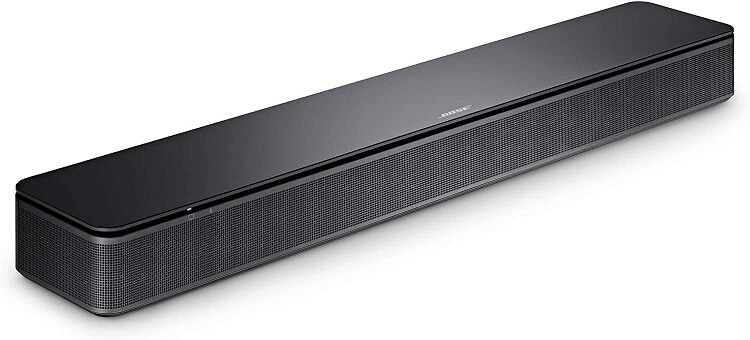
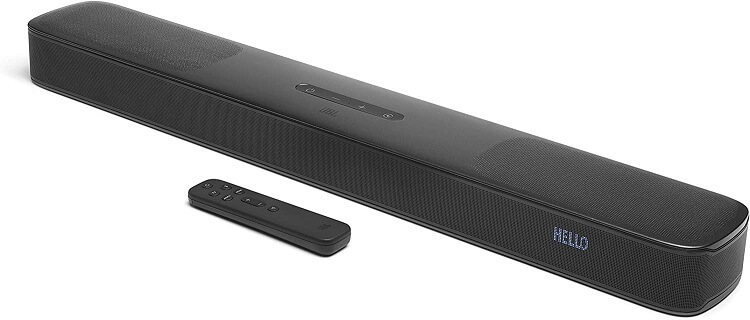
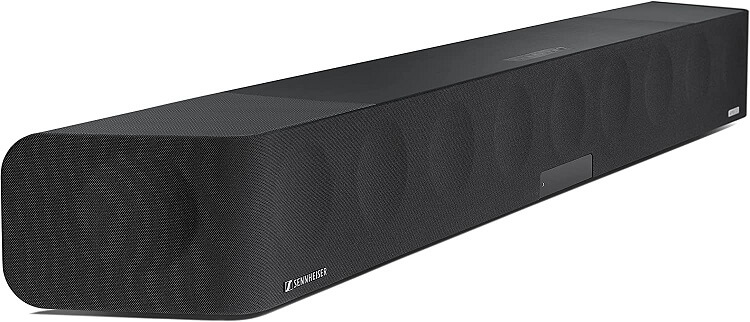
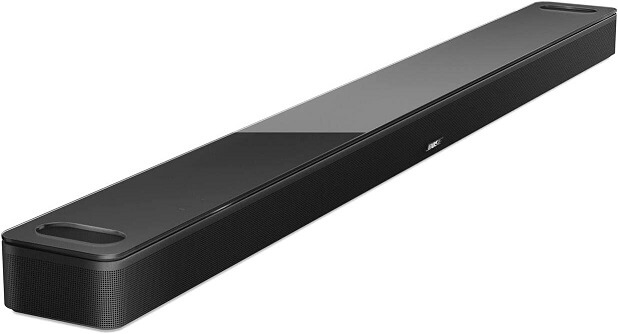

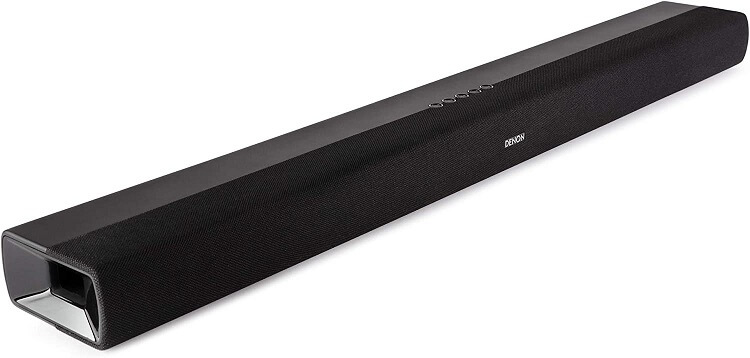



![]()